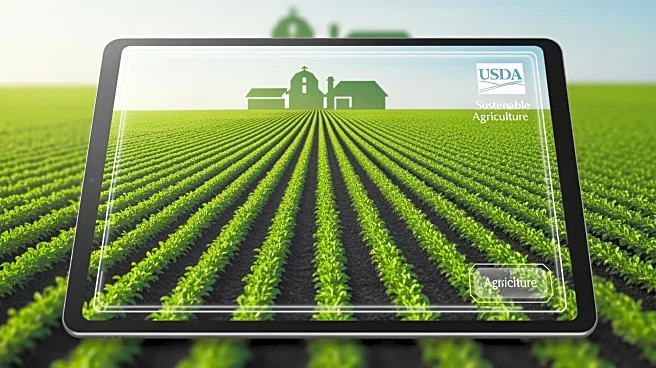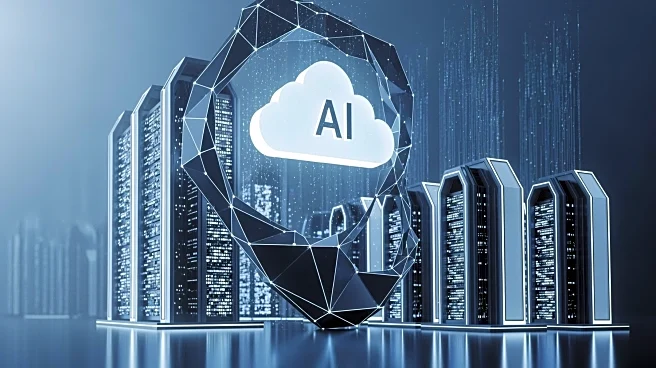What's Happening?
The digital farming market is experiencing significant growth, driven by government initiatives aimed at promoting precision agriculture and smart farming technologies. In 2023, the U.S. Department of
Agriculture made substantial investments to support the adoption of digital farming tools. These efforts are part of a broader strategy to address critical issues such as food security, resource optimization, and environmental sustainability. Farmers are increasingly utilizing technologies like AI, IoT, drones, and big data analytics to improve productivity and efficiency. These tools enable real-time monitoring of soil health, weather conditions, and crop vitality, allowing for precise irrigation and fertilization. Additionally, AI is used to predict crop diseases and recommend optimal harvest times, while drones and robotics help automate labor-intensive tasks.
Why It's Important?
The push towards digital farming is crucial for meeting the rising global food demand amidst challenges like water scarcity, labor shortages, and climate change. By adopting these technologies, farmers can significantly boost crop yields and reduce their environmental footprint. The digital farming market, valued at USD 23.9 billion in 2023, is projected to grow to USD 74.7 billion by 2032, with a compound annual growth rate of 13.5%. This growth is not only driven by technological advancements but also by the increasing demand for sustainable farming practices. The U.S. and European Union's support for these technologies highlights their importance in ensuring food security and promoting environmental sustainability.
What's Next?
As the digital farming market continues to expand, the Asia-Pacific region is emerging as a high-growth area due to agricultural modernization efforts in countries like India and China. In the U.S., continued government support and collaboration with tech firms and agricultural stakeholders are expected to further stimulate market growth. However, challenges such as high initial investment costs and the need for infrastructure and technical training remain. Addressing these barriers through tailored solutions and educational programs will be crucial for maximizing the potential of digital farming technologies.
Beyond the Headlines
The integration of cutting-edge technologies in agriculture is not only transforming farming practices but also reshaping the agricultural supply chain. Innovations like blockchain for supply chain transparency and advanced drones for crop surveillance are enhancing efficiency and traceability. These developments promise to improve sustainability and yield outcomes, offering long-term benefits for the agricultural sector.













